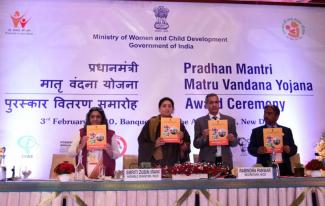
The Cabinet Committee on Economic Affairs, chaired by Prime Minister Shri Narendra Modi has approved the proposal of Department of Fertilizers to continue Urea Subsidy Scheme upto 2019-20 at a total estimated cost of Rs. 1,64,935 crore and for disbursement of fertilizer subsidy. This decision implies that there will be no increase in price of urea, till 2020.
Details:
Urea Subsidy is a part of Central Sector Scheme of Department of Fertilizers w.e.f 1st April, 2017 and is wholly financed by the Government of India through Budgetary Support. The continuation of Urea Subsidy Scheme will ensure the timely payment of subsidy to the urea manufacturers resulting in timely availability of urea to farmers. Urea subsidy also includes Imported Urea subsidy which is directed towards import to bridge the gap between assessed demand and indigenous production of urea in the country. It also includes freight subsidy for movement of urea across the country.
This is in continuation to farmer-friendly policies of the Central Government. Earlier, 100% Neem Coated Urea was made mandatory in 2015. A study conducted by the Department of Agriculture, Cooperation & Farmers Welfare (DAC&FW) had found the effects of Neem Coating of Urea as follows:
- Improvement in soil health.
- Reduction in costs with respect to plant protection chemicals.
- Reduction in pest and disease attack.
- An increase in yield of paddy to an extent of 5.79 per cent.
- An increase in yield of sugarcane to extent of 17.5 per cent.
- An increase in yield of maize to the extent of 7.14 per cent.
- An increase in yield of Soybean to the extent of 7.4 per cent.
- An increase in yield of Tur/Red Gram to the extent of 16.88 per cent.
Neem Coating also had an additional positive impact – plugging the diversion of the subsidized Urea towards non-agricultural purposes. In light of the increased efficiency of Urea due to Neem Coating, Government had recently decided to bag Urea in 45kg bags. This will effectively help reduce the cost of fertilizers to the farmers.
Government had earlier notified New Urea Policy, 2015, with the objectives of maximizing indigenous urea production; promoting energy efficiency in urea production; and rationalizing subsidy burden on the government. This led to the highest ever production of 245 LMT during 2015-16. In effect, 20 LMT of Urea during was additionally produced without adding additional any capacity.











